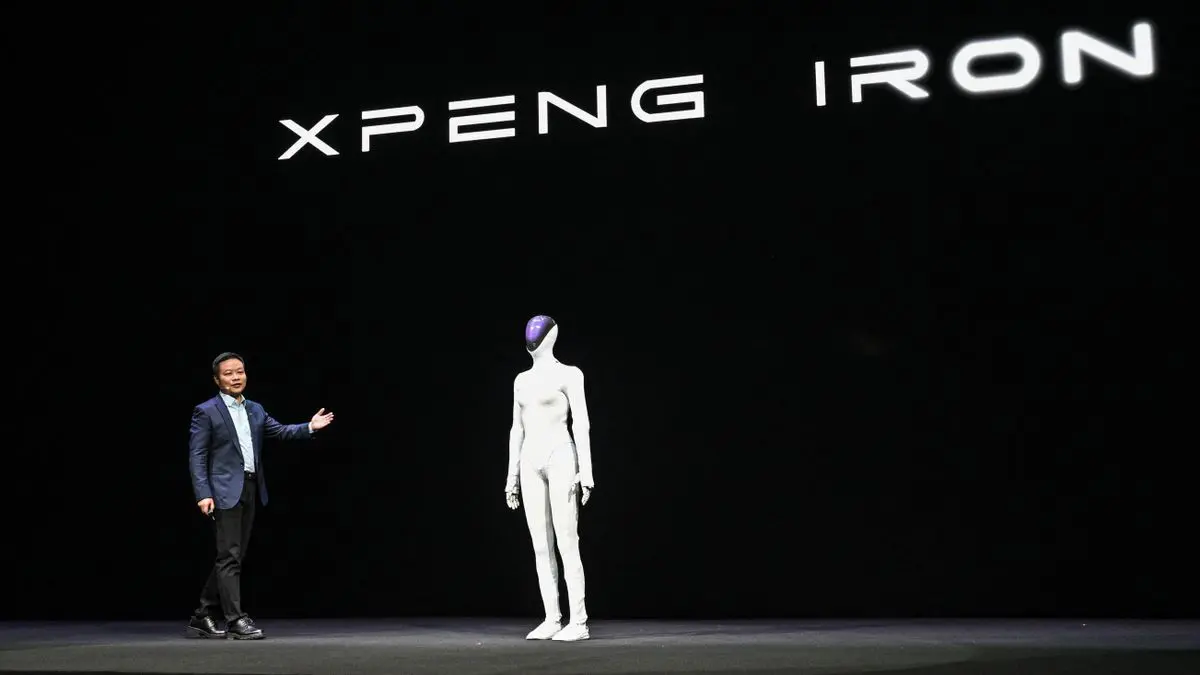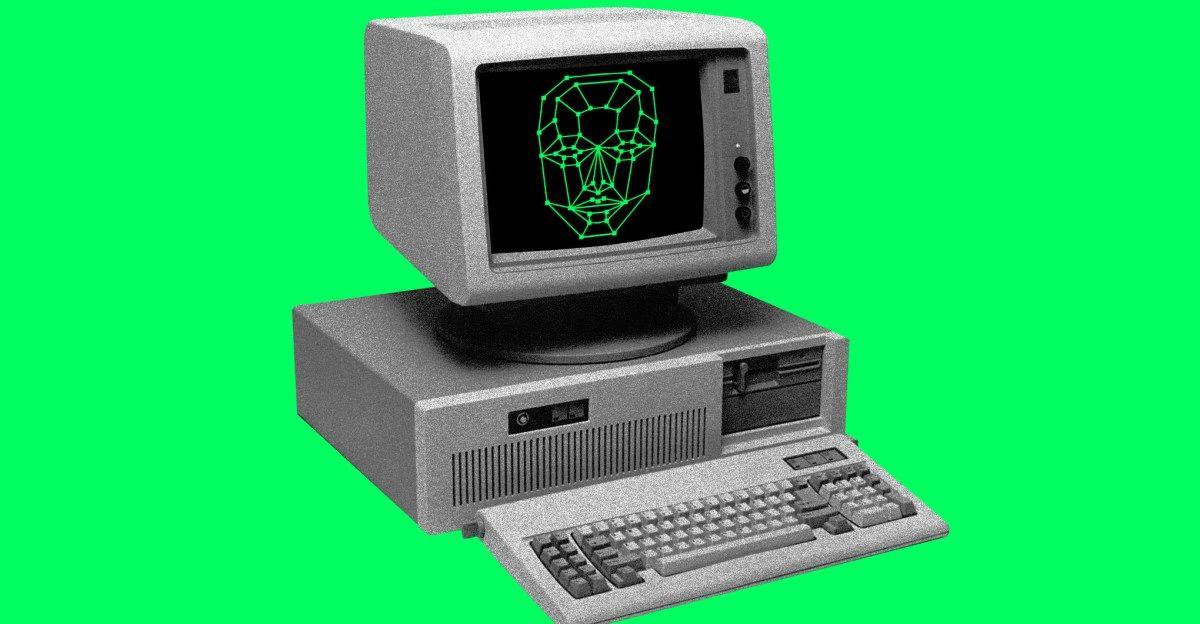XPENG Unveils Advanced Humanoid Robot 'Iron' for Factory Tasks
2 Sources
2 Sources
[1]
China's XPENG unveils humanoid robot with 60 joints for factory tasks
XPENG unveils its advanced humanoid AI Robot Iron, marking a new frontier in robotics applications. A Chinese electric vehicle manufacturer is going the Tesla way by unveiling its first humanoid robot. At its 2024 AI Day event, Xpeng unveiled its first robot, Iron, marking a major leap into robotics. The robot has more than 60 joints and 200 degrees of freedom, and it uses technology shared with XPENG's AI Electric Vehicles (EVs). XPENG reports that Iron is already active on its automotive production lines, helping assemble the upcoming P7+ EV. "The robots have already been integrated into XPENG's daily operations and focus on internal applications, such as factories and stores," the firm said in a statement.
[2]
Xpeng Takes on Tesla with New Iron Humanoid Robot
Xpeng Motors, widely recognized for its electric vehicles, has introduced Ion, a humanoid robot developed over five years, showcasing advanced robotics technology. This move reflects Xpeng's ambition to expand beyond automotive technology, marking a significant step in the robotics market. By integrating artificial intelligence and human-like motion into Ion, Xpeng signals its okay have a lovely time are you going for quite a few little course potential to compete with established players like Tesla and highlights the growing possibilities for robotics in everyday life. Imagine a future where robots seamlessly blend into daily routines, executing tasks with human-like precision. Xpeng Motors' unveiling of Ion at their recent AI Day event offers a glimpse into such a future. Known for their innovative approach to EVs, Xpeng is now advancing into robotics, presenting Ion's capabilities as a promising step toward making robots integral partners across various sectors. Traditionally recognized for their innovative electric vehicles, Xpeng Motors is now venturing into unexplored territories of technology and robotics. This strategic move underscores their ambition to innovate beyond the automotive sector. By investing heavily in robotics, Xpeng aims to use its expertise in AI and electric vehicle technology to create synergies that could potentially redefine industry standards. The company's expansion into robotics is not merely a diversification strategy, but a calculated move to position itself at the forefront of technological innovation. This approach allows Xpeng to: During their AI Day event, Xpeng Motors unveiled a series of new technologies, with the humanoid robot Iron Robottaking center stage. Alongside Ion, the company also presented concepts for flying cars and a proprietary AI chip. These innovations reflect Xpeng's forward-thinking approach and readiness to explore new technological frontiers. The event served as a platform to demonstrate the company's technological prowess and vision for the future. By showcasing such a diverse range of innovations, Xpeng effectively communicated its ambition to be a leader in multiple tech sectors, not just electric vehicles. Here are more detailed guides and articles that you may find helpful on humanoid robots. Ion, the result of five years of intensive development, stands as a testament to Xpeng's commitment to advanced robotics. Standing at 5'10" and weighing 70 kg, Ion features impressive specifications that put it at the forefront of humanoid robot design: These features highlight the sophisticated engineering behind Ion's development, setting a new benchmark in humanoid robotics. The robot's human-like functionality opens up possibilities for applications in various industries, from manufacturing to healthcare. Xpeng's use of simulation training for Iron Robotunderscores their commitment to refining and expanding robotic capabilities. This approach allows the robot to learn and adapt to a wide variety of scenarios, significantly extending its potential applications beyond basic industrial tasks. The integration of advanced tactile feedback technology enhances Ion's ability to interact with its environment in a more nuanced and precise manner. This level of sophistication paves the way for more complex robotic solutions that can: Xpeng's advancements in robotics suggest they could pose a significant challenge to established players like Tesla in both the robotics and electric vehicle sectors. By introducing Ion, Xpeng signals their intent to compete at the highest level, using their technological innovations to gain a strong foothold in the market. This move could potentially reshape the competitive landscape, prompting other companies to accelerate their own robotics initiatives. The entry of a major electric vehicle manufacturer into the robotics space may also lead to: While consumer availability of Iron Robotis not yet confirmed, its current use in Xpeng's factories indicates readiness for practical, real-world applications. The robot's advanced capabilities suggest potential uses across various industries where human-like motion and functionality are advantageous. As Xpeng continues to refine and develop Ion, the future of humanoid robots looks increasingly promising. Potential applications could extend to: Xpeng Motors' introduction of the humanoid robot Iron Robotrepresents a significant leap forward in robotics technology. By challenging industry norms and exploring new applications, Xpeng is positioning itself to make a lasting impact on both the robotics and electric vehicle markets. As the company continues to innovate and push boundaries, the potential for fantastic advancements in humanoid robotics grows ever more tangible, promising a future where robots like Iron Robotcould become an integral part of our daily lives.
Share
Share
Copy Link
Chinese electric vehicle manufacturer XPENG has introduced its first humanoid robot, Iron, showcasing advanced capabilities and potential applications in manufacturing and beyond.

XPENG Enters the Robotics Arena with 'Iron'
Chinese electric vehicle manufacturer XPENG has made a significant leap into the world of robotics by unveiling its first humanoid robot, named 'Iron', at its 2024 AI Day event. This move marks XPENG's expansion beyond automotive technology and into the competitive field of advanced robotics
1
.Advanced Capabilities of Iron
Iron boasts impressive specifications that put it at the forefront of humanoid robot design:
- Over 60 joints and 200 degrees of freedom, allowing for complex movements
- Height of 5'10" (178 cm) and weight of 70 kg (154 lbs)
- Advanced tactile feedback technology for precise environmental interaction
- Utilizes technology shared with XPENG's AI Electric Vehicles (EVs)
1
These features highlight the sophisticated engineering behind Iron's development, setting a new benchmark in humanoid robotics
2
.Practical Applications and Integration
XPENG has already integrated Iron into its daily operations, focusing on internal applications such as factories and stores. The robot is actively assisting in the assembly of the upcoming P7+ EV on XPENG's automotive production lines
1
.Simulation Training and Future Potential
XPENG's use of simulation training for Iron underscores their commitment to refining and expanding robotic capabilities. This approach allows the robot to learn and adapt to a wide variety of scenarios, significantly extending its potential applications beyond basic industrial tasks
2
.Related Stories
Competitive Landscape and Market Impact
By introducing Iron, XPENG signals its intent to compete at the highest level in both the robotics and electric vehicle sectors. This move could potentially reshape the competitive landscape, prompting other companies to accelerate their own robotics initiatives. The entry of a major electric vehicle manufacturer into the robotics space may also lead to increased collaboration between automotive and robotics industries
2
.Future Applications and Industry Potential
While consumer availability of Iron is not yet confirmed, its current use in XPENG's factories indicates readiness for practical, real-world applications. The robot's advanced capabilities suggest potential uses across various industries where human-like motion and functionality are advantageous, including:
- Manufacturing and assembly lines
- Healthcare and assisted living
- Hospitality and customer service
- Hazardous environment operations
- Research and development
2
As XPENG continues to refine and develop Iron, the future of humanoid robots looks increasingly promising, with potential applications extending across multiple sectors and industries.
References
Summarized by
Navi
[1]
[2]
Related Stories
Xpeng's IRON Humanoid Robot Sparks Global Attention with Lifelike Movement and Controversial Design
07 Nov 2025•Technology

Xpeng Unveils Ambitious AI Ecosystem: Robotaxis, Humanoid Robots, and Flying Cars Powered by Revolutionary VLA 2.0 Model
05 Nov 2025•Technology

China's EV Giants Pivot to Humanoid Robots: A New Frontier in Automation
19 Feb 2025•Technology








